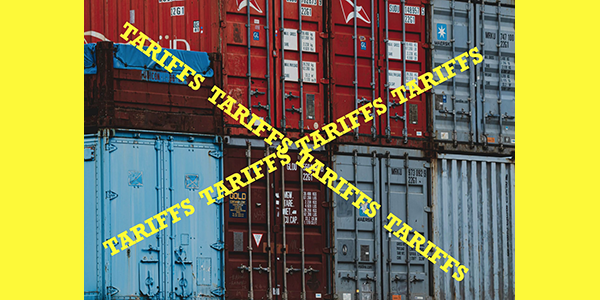||| FROM SUBSTACK |||
President Trump insists that stiff tariffs on products from other countries will help U.S. manufacturers, despite the risk of higher prices for consumers and even a recession. Of far less interest in the news media is that increased domestic manufacturing and related activities, such as mining, would have greater impacts on the domestic environment.
On the other hand, insofar as tariffs might diminish industrial manufacturing in other countries, their environments could certainly benefit.
Globally, an economic downturn triggered by tariffs would slow growth, and reduce international shipping of goods and materials across vast distances. The result would be less energy use, less carbon emissions, and less pollution for the planet as a whole.
Let’s consider steel, and whether other countries cause greater or lesser environmental impacts than the U.S. when manufacturing it. Last year, the U.S. imported $33 billion worth of steel from 79 countries, with Canada, Brazil, Mexico, South Korea, and Germany being the top five exporters. Other major steel exporters to the U.S. include the Asian countries of Japan, China, and Vietnam.
In terms of greenhouse gas emissions from blast furnace steel production, Canada is less polluting than the U.S., Mexico and Germany are comparable, and Brazil and Asian countries are worse.
But most steel in the U.S. is now made by melting down recycled metal using machines called electric arc furnaces, resulting in less carbon release. By this measure, Canada and Brazil do a lot better than Mexico and Asia.
Of course, there’s a lot more environmental harm caused by the production of steel and related products than that tied to greenhouse gas emissions (steel accounts for over 7% of total global emissions).
Steel production at today’s massive scale involves incredible destruction of terrestrial life, natural ecosystems, water and soil impacts, air pollution, hazards to marine life, and harms to indigenous people and traditional communities. Most of the world’s iron ore comes from Australia, Brazil, China, and India, and is shipped to just about everywhere. A tremendous amount of environmental damage results from extracting, transporting, and processing iron ore. Check out this recent article in Mongaby that summarizes the horrific environmental costs of producing steel (and aluminum) to humans and other life.
U.S. raw steel imports, of course, don’t include the vast amounts of steel imported with finished products. For example, the U.S. accounts for 22% of all imported steel-laden cars, a figure far exceeding that of other countries. But those too have been targeted for new tariffs by Trump, driving automaker stocks down out of fear of higher vehicle costs and reduced demand. Trump’s import tariffs also trigger reciprocal tariffs, not only on steel but on products that contain steel. This further cuts consumption.
**If you are reading theOrcasonian for free, thank your fellow islanders. If you would like to support theOrcasonian CLICK HERE to set your modestly-priced, voluntary subscription. Otherwise, no worries; we’re happy to share with you.**








